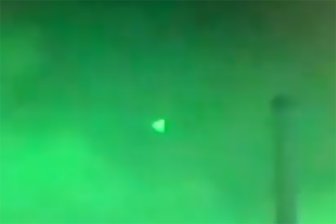Scientists have successfully combined human and monkey cells into a single living, growing embryo, in a major — and ethically complex — breakthrough for organ transplant research.
But don’t worry: This isn’t the real-world prequel to a planet of the semi-human apes. At least, not yet.
An international team of researchers added human stem cells to macaque monkey embryos and watched as they survived and multiplied as one, according to the findings published Thursday in the journal Cell. The scientists effectively created genetic chimeras — a term borrowed from the mythical monster to describe one organism with genes from multiple individuals.
Juan Carlos Izpisua Belmonte, a professor at the Salk Institute and co-author on the study, insists that this is not about creating a full-grown chimera with human and animal traits.
“Our goal is not to generate any new organism, any monster,” he told NPR. “And we are not doing anything like that. We are trying to understand how cells from different organisms communicate with one another.”
He adds that the discovery could lead to better understanding of human biology and diseases, as well as more effective human chimeras involving less similar species. That, perhaps, could lead to animals being used to grow organs for human transplant.
Belmonte and his team injected 25 human stem cells into macaque embryos taken six days after fertilization. Human cells were found growing inside 132 of the embryos after one day, and 103 chimeras were still alive after Day 10. Nearly all had died by Day 19, and the rest were destroyed on Day 20.
“On average we observed around 4 per cent of human cells in the monkey epiblast,” co-author Dr. Jun Wu, at the University of Texas Southwestern Medical Center, told The Guardian.

“We demonstrated that the human stem cells survived and generated additional cells, as would happen normally as primate embryos develop and form the layers of cells that eventually lead to all of an animal’s organs,” Belmonte said.
The successful experiment was a major step forward for Belmonte, who has studied this area for decades and who has previously tried to combine human and pig cells in the same manner.
The breakthrough is part of a broader effort to see if animals can be used to grow human organs for transplant patients — a goal that others have also chased by trying to splice human DNA into pigs, mice and sheep. Chinese researchers have also created pig-monkey chimeras with the same end goal in mind.
Belmonte says these revelations about cell communication will hopefully make it easier to create chimeras out of more genetically distant species, such as humans and pigs, in the future.
Of course, the breakthrough also opens up a slew of difficult ethical questions.
“My first question is: Why?” Kirstin Matthews, a fellow for science and technology at Rice University’s Baker Institute, told NPR. “I think the public is going to be concerned, and I am as well, that we’re just pushing forward with science without having a proper conversation about what we should or should not do.”
Professor Julian Savulescu, the director of the Oxford Uehiro Centre for Practical Ethics and co-director of the Wellcome Centre for Ethics and Humanities at the University of Oxford, also raised concerns about this discovery becoming a slippery slope.
“These embryos were destroyed at 20 days of development, but it is only a matter of time before human-nonhuman chimeras are successfully developed, perhaps as a source of organs for humans,” he told The Guardian.
He added that any fully-grown chimera involving human cells would need to be thoroughly assessed to see what its mental capacity is like, especially if it’s to be used for organ transplants.
“What looks like a nonhuman animal may mentally be close to a human,” he said. “We will need new ways to understand animals, their mental lives and relationships before they are used for human benefit.”
The embryos in this experiment had not progressed to the point where they were forming body parts or brain cells.
Belmonte says the next step is to better understand the communication pathways between cells, and to determine which ones are critical for an embryo’s development.
He adds that he and his team performed “ethical consultations and reviews” before they made their chimeras, with help from unaffiliated bioethicists.
“It is our responsibility as scientists to conduct our research thoughtfully, following all the ethical, legal, and social guidelines in place,” he said.
© 2021 Global News, a division of Corus Entertainment Inc.
https://news.google.com/__i/rss/rd/articles/CBMiRmh0dHBzOi8vZ2xvYmFsbmV3cy5jYS9uZXdzLzc3NjAxNjcvaHVtYW4tbW9ua2V5LWNoaW1lcmEtZW1icnlvLWh5YnJpZC_SAUpodHRwczovL2dsb2JhbG5ld3MuY2EvbmV3cy83NzYwMTY3L2h1bWFuLW1vbmtleS1jaGltZXJhLWVtYnJ5by1oeWJyaWQvYW1wLw?oc=5
2021-04-15 20:17:16Z
52781518363819


Tidak ada komentar:
Posting Komentar